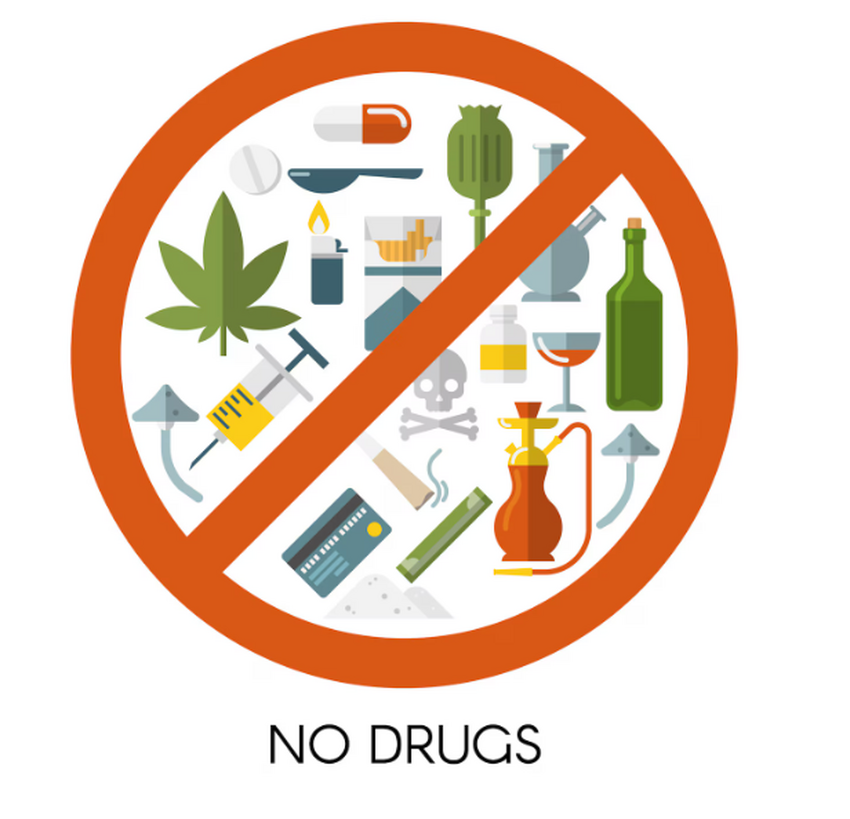Victimhood mentality, often referred to as "victim complex" or "victim syndrome," is a mindset that involves perceiving oneself as a victim in most situations despite evidence to the contrary.
This mentality can contribute to various psychological issues, including learned helplessness, depression, and anxiety. It can also form part of specific personality disorders, such as Borderline Personality Disorder (BPD) and Narcissistic Personality Disorder (NPD), where individuals might experience intense emotional responses and a tendency to externalize blame.
Diagnosis and Characteristics of Victimhood Mentality
Victimhood mentality is not a standalone diagnosis in the DSM-5, but it can be a symptom or behavior pattern associated with other mental health disorders. It often involves a pervasive belief that one is powerless or oppressed, reluctance to take responsibility for personal actions, blaming external factors or others for personal misfortunes, and a tendency to focus on past traumatic events. Since victimhood mentality is not a medical condition but a pattern of thinking and behavior, it cannot be "cured" in the traditional medical sense.
Client Example:
Consider a client named Jane, who is regularly convinced that her coworkers are out to sabotage her at work. Despite evidence suggesting otherwise, Jane struggles to accept positive feedback and often feels that her contributions are undervalued due to a perceived bias against her. This belief fuels her anxiety and contributes to a cycle of self-doubt and ineffective workplace interactions.
The Issue(s) for Clients like Jane: A victimhood mentality can lead to significant personal and professional challenges for individuals like Jane. These might include strained relationships, career stagnation, and emotional distress. This mindset can hinder personal and professional growth, which is detrimental to Jane, preventing Jane and others who experience a victimhood mentality from evolving. This would be unfortunate for Jane as she would never recognize agency nor be able to fully take responsibility due to a lack of agency to support growth.
In Session - Therapeutic Approaches & Strategies: Therapeutic interventions can significantly change or manage the victimhood mentality of patients like Jane. Specifically, when I work with clients who struggle with a victimhood mentality, I incorporate therapeutic approaches of Cognitive Behavioral Therapy (CBT) and Dialectical Behavior Therapy (DBT). Additionally, I include supportive strategies so individuals like Jane can learn to challenge and alter their negative thought patterns and behaviors that enable a victimhood mentality.
CBT Strategies: Within the session, cognitive restructuring is exceptionally beneficial in addition to identifying and challenging negative thought patterns. I would utilize role-playing for Jane, which can be highly effective in practicing new responses to perceived threats. I would encourage Jane to write in a journal for the CBT homework to reflect on daily experiences and recognize maladaptive thoughts and behavioral patterns that are related to her victimhood mentality so that we can review in our session and role-play the more positive responses for future instances to help condition and make Jane more comfortable when experiencing similar work, social conflicts.
DBT Strategies: Incorporate mindfulness exercises into the session to increase self-awareness and practice emotion regulation techniques. Interpersonal effectiveness training will also help Jane reduce impulsive reactions and improve communication and relationship skills. I have found that clients who incorporate these DBT strategies within our session and their daily routine are better able to manage, e.g., less reactive to triggers that enable victimhood response(s) and can move towards a healthier well-being of being able to take constructive criticism as well as be able to take accountability.
TO CONSIDER: Victimhood Mentality can stem from past trauma and be a way for the individual to survive within an environment that is not healthy, positive, or conducive.
Victim Mentality as a Trauma Response
Research indicates that victimhood mentality can be a trauma response. Traumatic experiences may reinforce feelings of helplessness and powerlessness, perpetuating the victim's identity. Studies have shown that individuals with a history of trauma often exhibit a stronger external locus of control, which is a core component of the victimhood mentality (Cramer, 2016).
To Summarize: These therapeutic approaches and modalities can help clients develop healthier perspectives and healthy coping strategies, ultimately reducing the hold on a victimhood mentality. The key is consistent effort and willingness to self-reflect and grow. As a therapist, employing Cognitive Behavioral Therapy (CBT) and Dialectical Behavior Therapy (DBT) can be effective in addressing victimhood mentality. CBT helps patients identify and challenge the distorted thoughts contributing to their victimhood mindset. It encourages the development of healthier thinking patterns and behaviors. DBT, on the other hand, focuses on emotional regulation and distress tolerance, helping clients like Jane to manage intense feelings and develop healthier coping mechanisms. It is crucial to take into consideration when working with a client who exhibits a victimhood mentality if this is a trauma response and, therefore, utilize therapeutic approaches, modalities, and resources to help support your client.
Why is there such a misunderstanding of victimhood mentality?
- Complexity of Trauma Responses: As discussed earlier in the article, victimhood mentality is sometimes a coping mechanism developed in response to past trauma. It can manifest as a way to process feelings of helplessness and loss of control. Society might misinterpret these behaviors as attention-seeking or an unwillingness to change, rather than recognizing the underlying trauma (Cramer, 2016).
- The Role of Culture: Cultural narratives often value self-reliance and resilience, which can create a bias against those perceived as victims. This cultural misunderstanding overlooks the genuine psychological distress and the need for support and empathy (Schmitt et al., 2014).
- Impact on Relationships: Individuals with a victimhood mentality might struggle with relationships due to misinterpretations of their behavior. Others might view them as difficult or negative, without understanding the depth of their emotional struggles (Thomas & Sharp, 2019).
- Cultural Emphasis on Strength and Independence: Many cultures value self-reliance and resilience, which can stigmatize those who express vulnerability or distress. For example, in workplaces that prioritize competitiveness and assertiveness, individuals expressing feelings of victimhood may be seen as lacking the necessary drive or toughness.
- Misinterpretation of Intent: People with a victimhood mentality might express their struggles in ways perceived as blaming or complaining. This can lead others to view them as manipulative or unwilling to take responsibility. For instance, a person frequently discussing their challenges might be seen as seeking attention rather than genuinely needing support.
These societal perceptions overlook the complexity of psychological responses and the genuine need for empathy and support. Recognizing the societal misconceptions around victimhood mentality can foster a more empathetic understanding and support those who struggle with this mindset. Victimhood mentality is often misunderstood in society and frequently seen as a sign of weakness or manipulation rather than a complex psychological response. This misunderstanding can lead to stigma and isolation for those affected. Society often lacks a nuanced understanding of how trauma can affect behavior. Without recognizing that a victimhood mentality can be a response to trauma, people may dismiss these individuals as negative or weak. For example, someone repeatedly expressing feelings of helplessness may be reacting to unresolved trauma, not simply choosing to remain passive. Promoting awareness and understanding can reduce the stigma and better support those experiencing a victimhood mentality.
Now, how does one differentiate between genuine victimhood and a victimhood mentality? This involves understanding the context and the individual's response to their circumstances. Here are some ways to make this distinction:
- Objective Assessment of Situations: Real victimhood often involves clear, identifiable instances of harm or injustice, such as abuse, discrimination, or trauma. It requires assessing the facts of the situation to determine if the individual's experiences align with these criteria.
- Emotional and Behavioral Responses: Genuine victims may exhibit a range of emotions like fear, anger, or sadness, and their behaviors often aim towards seeking justice or healing. In contrast, a victimhood mentality may involve persistent feelings of helplessness and a focus on blaming others without seeking resolution or change.
- Willingness to Seek Solutions: Real victims often strive to overcome their circumstances by seeking help, support, or justice. They may engage in therapy, legal action, or advocacy. Those with a victimhood mentality might resist solutions and remain focused on the perceived injustice without taking steps toward improvement.
- Consistency Across Situations: Genuine victimhood is typically situation-specific, whereas a victimhood mentality might persist across various unrelated situations, showing a pattern of perceiving oneself as a victim in numerous aspects of life. Understanding these distinctions requires careful listening and empathy, recognizing that both real victims and those with a victimhood mentality need support but may require different approaches to healing and empowerment.
Victimhood Mentality In Literature
Arthur Miller's "Death of a Salesman
I am going to share an example of a well-known character that exemplifies victimhood mentality as sometimes we do not realize that even in famous books, plays, movies, etc., the main character(s) exhibiting victimhood mentality is Willy Loman's character in Arthur Miller's "Death of a Salesman." Willy is a poignant example of how a victimhood mentality can lead to personal and familial destruction. His demise is a culmination of his inability to escape this mindset.
- Entrapment in Illusions: Willy is trapped in his illusions of the American Dream, believing success is purely a matter of being well-liked. This unrealistic expectation blinds him to his shortcomings and the need for adaptation. As noted by Miller (1949), Willy's adherence to these illusions prevents him from accepting reality, leading to his mental decline.
- Projection of Blame: Willy consistently projects blame onto others, including his boss and sons, for his failures. This deflection prevents self-reflection or improvement, deepening his sense of victimhood. According to Bigsby (2005), this projection is a defense mechanism that shields Willy from confronting his own failures, further isolating him.
- Mental Deterioration and Demise: Willy's continuous denial and externalization of blame contribute to his mental deterioration. His ultimate demise, through suicide, is seen as his final attempt to reclaim control and provide for his family through insurance money. Miller (1949) depicts this tragic end as a result of Willy's unyielding adherence to a flawed belief system, illustrating the destructive potential of a victim mentality.
Willy often perceives himself as a victim of societal expectations and economic pressures. He frequently blames external circumstances for his lack of success and personal dissatisfaction rather than recognizing his role in his situation. Willy's inability to confront his shortcomings or adapt to change leads to a persistent state of helplessness and frustration. This character can resonate with readers as it highlights the internal struggle of dealing with perceived failures and the consequences of not taking personal responsibility. Willy Loman's story underscores the dangers of a victimhood mentality, showing how it can lead to tragic outcomes when individuals fail to adapt, reflect, and accept responsibility for their actions.
Victimhood in Social Media, Cancel Culture, Hollywood:
Social media, cancel culture, and Hollywood have significantly influenced societal dynamics, promoting a victimhood mentality, particularly among younger generations such as Gen Z and Gen Alpha. This influence manifests in several ways:
- Amplification of Victim Narratives: Social media platforms often amplify stories of perceived victimization, creating an environment where being a victim can garner attention and sympathy. This can lead individuals to adopt a victim mindset to gain validation or support online (Ng, 2020).
- Cancel Culture Dynamics: Cancel culture involves publicly calling out individuals or entities for perceived wrongdoings, often resulting in social ostracism. This environment can perpetuate a sense of victimhood, both for those who are "canceled" and those who engage in canceling, as it can foster an us-versus-them mentality (Williams, 2021).
- Influence on Younger Generations: Gen Z and Gen Alpha are particularly vulnerable to these dynamics due to their high engagement with digital media and the developmental stage of forming identity. The pressure to align with popular narratives online can lead to adopting victimhood as a part of identity (Twenge, 2017).
- Shows and Movies: Media like "13 Reasons Why" dramatizes victimization and its impacts, potentially normalizing these narratives for impressionable audiences.
- Music: Certain music genres often emphasize themes of personal struggle and victimhood, which can resonate with and reinforce these feelings among listeners.
- Books: Works like "The Hate U Give" address social injustices, important for awareness but also capable of reinforcing a victim narrative if not balanced with empowerment themes.
The pervasive nature of social media cancel culture, and Hollywood can encourage a victimhood mentality by amplifying negative experiences and promoting divisive narratives. It is crucial for individuals, especially younger generations, to develop critical thinking and resilience to navigate these influences in a healthy, more positive, and productive way.
Gen Z and Gen Alpha - Victimhood Prevalence
The prevalence of victimhood mentality among Gen Z and Gen Alpha compared to past generations can be attributed to several key factors, and a better understanding of the factors below can help address the root causes of victimhood mentality and provide insights into fostering resilience and agency among younger generations:
1. Digital Connectivity and Social Media: These generations have grown up with unprecedented access to digital technology and social media, which amplifies personal narratives and societal issues. The constant exposure to curated content and public discourse can heighten sensitivity to perceived injustices and foster a victim mindset (Twenge, 2017).
2. Heightened Awareness of Social Issues: Gen Z and Gen Alpha are more aware of social justice issues due to widespread information sharing online. While this awareness is crucial, it can also lead to a heightened sense of victimhood as they navigate complex societal challenges (Pew Research Center, 2019).
3. Cultural Shifts in Parenting and Education: These generations have often been raised in environments that emphasize self-esteem and validation. While positive in many respects, this focus can sometimes lead to difficulties in coping with adversity, contributing to a victimhood mentality when faced with challenges (Twenge, 2017).
4. Economic and Environmental Uncertainty: Growing up during times of economic instability and environmental crises can also contribute to feelings of helplessness and victimhood. These concerns are more immediate for younger generations than for many in the past (Williams, 2020).
The emergence of a victimhood mentality among Gen Z and Gen Alpha can be attributed to digital connectivity, heightened social awareness, cultural shifts, and global uncertainties. Social media, cancel culture, and Hollywood significantly amplify personal narratives and societal divisions, often encouraging younger generations to perceive themselves as victims within complex social landscapes. Unlike their predecessors, these generations face unique challenges, such as constant digital exposure and economic and environmental instability, which can exacerbate feelings of helplessness. However, understanding these dynamics offers a pathway to addressing the root causes of victimhood mentality. By fostering critical thinking, resilience, and adaptive coping strategies, society can empower individuals to navigate adversities constructively. Encouraging open communication, balanced perspectives in media, and supportive environments can mitigate the negative impacts of these pervasive influences, ultimately guiding these generations toward a more empowered and proactive future. Through collective effort and empathy, we can transform the narrative from victimhood to strength and agency.
In conclusion, the victimhood mentality presents a complex challenge that intertwines psychological, cultural, and societal dynamics. It is often stigmatized and seen as a sign of weakness or manipulation rather than recognized as a potential trauma response requiring understanding and empathy. This mentality is frequently perpetuated through narratives in books, movies, music, and broader cultural influences, which can subtly reinforce feelings of helplessness and externalization of blame. Therapists play a crucial role in assisting clients with a victimhood mentality. By employing best practices such as Cognitive Behavioral Therapy (CBT) and Dialectical Behavior Therapy (DBT), therapists help clients identify and restructure negative thought patterns, promoting personal responsibility and empowerment. Additionally, addressing underlying trauma is essential, as victimhood mentality can often be a manifestation of unresolved emotional wounds. The stigmatization of victimhood mentality can lead to isolation and hinder individuals from seeking necessary help. It's vital to shift societal perceptions towards a more compassionate understanding, recognizing that individuals need support and practical tools for change. Future generations are at risk of inheriting this mentality if cultural narratives continue to emphasize victimhood over resilience. The consequences may include reduced personal agency, strained relationships, and an inability to cope with life's challenges effectively. Being proactive involves fostering resilience, encouraging accountability, and promoting positive narratives that empower rather than victimize. We can mitigate the negative impacts of victimhood mentality by cultivating environments that support growth and adaptability and engaging constructively with cultural narratives. This proactive approach benefits individuals and contributes to a society where empowerment and resilience are the norms.
References:
- Bigsby, C. W. E. (2005). *Arthur Miller: A Critical Study*. Cambridge University Press. Miller, A. (1949). *Death of a Salesman*. Viking Press.
- Cramer, P. (2016). Understanding and Changing the Victim Mentality: A Guide for Professionals Working with Trauma Survivors. Journal of Trauma & Dissociation, 17(3), 267-283.
- Dissociation, 17*(3), 267-283.
- Ng, E. (2020). *No Grand Pronouncements Here...: Reflections on Cancel Culture and Digital Media Participation*. Television & New Media, 21(6), 1-23.
- Pew Research Center. (2019). *Generation Z Looks a Lot Like Millennials on Key Social and Political Issues*. Retrieved from https://www.pewresearch.org
- Schmitt, M. T., Branscombe, N. R., & Postmes, T. (2014). The Consequences of Perceived Victimhood: Effects on Interpersonal Relationships and the Self. *Social Psychology Quarterly, 77*(4), 343-363.
- Studies and References Williams, R. (2021). Cancel Culture: Understanding the Phenomenon and Its Impact on Society*. Journal of Media Ethics, 36(2), 1-8.
- Thomas, J., & Sharp, G. J. (2019). Understanding Victimhood: The Role of Cultural Context in Interpreting Psychological and Behavioral Patterns. *International Journal of Psychological Studies, 11*(4), 29-40.
- Twenge, J. M. (2017). *iGen: Why Today’s Super-Connected Kids Are Growing Up Less Rebellious, More Tolerant, Less Happy—and Completely Unprepared for Adulthood*. Atria Books. Williams, R. (2020). *The Impact of Economic and Environmental Factors on Generational Perspectives*. Journal of Youth Studies, 23(5), 1-15.













